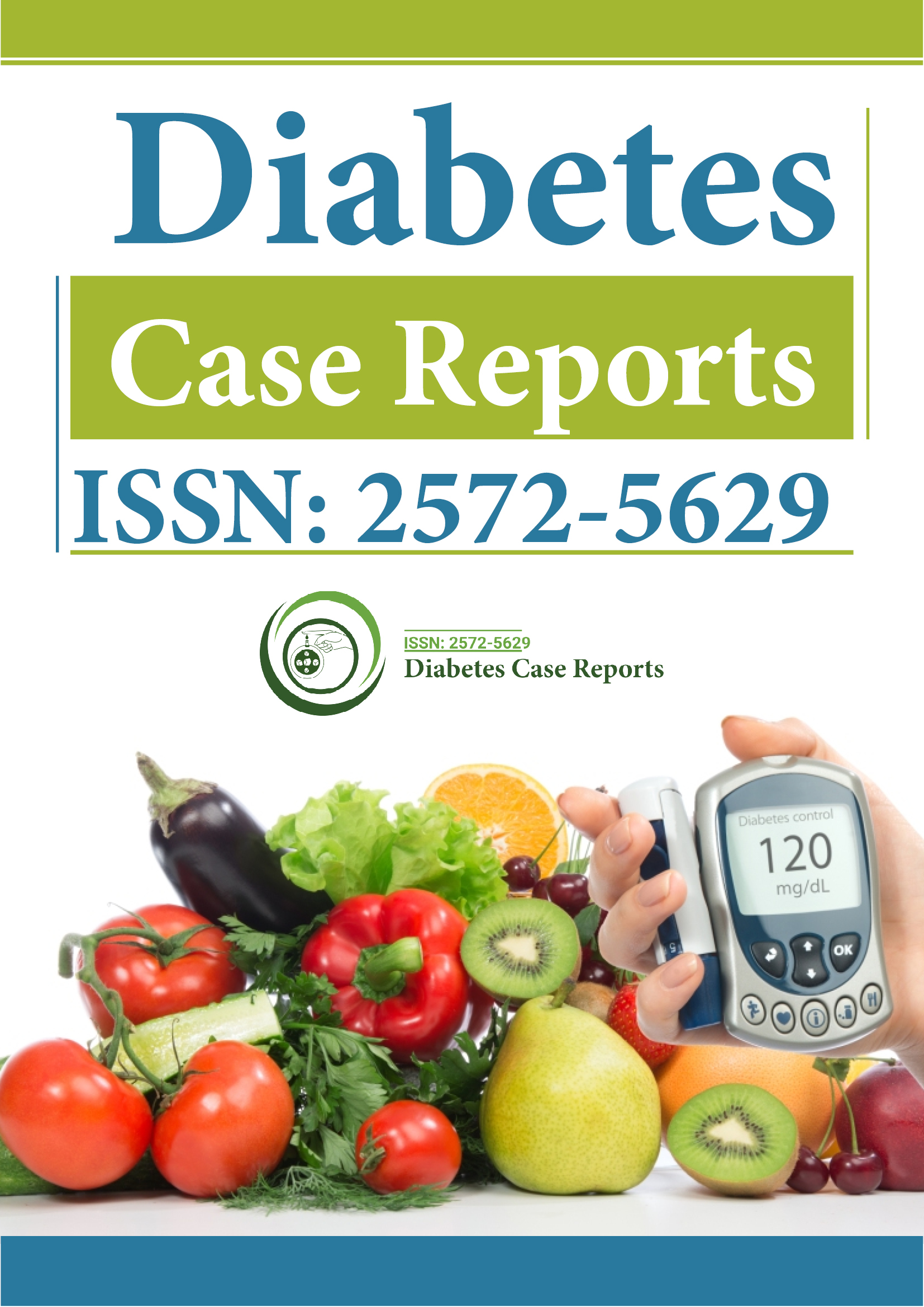Indexado em
- RefSeek
- Universidade de Hamdard
- EBSCO AZ
- Euro Pub
- Google Scholar
Links Úteis
Compartilhe esta página
Folheto de jornal

Periódicos de Acesso Aberto
- Agro e Aquicultura
- Alimentos e Nutrição
- Bioinformática e Biologia de Sistemas
- Bioquímica
- Ciência de materiais
- Ciencias ambientais
- Ciências Clínicas
- Ciências Farmacêuticas
- Ciências gerais
- Ciências Médicas
- Cuidados de enfermagem e saúde
- Engenharia
- Genética e Biologia Molecular
- Gestão de negócios
- Imunologia e Microbiologia
- Neurociência e Psicologia
- Química
Abstrato
Reconhecendo a lacuna: uma série de casos de cetoacidose diabética associada ao inibidor do SGLT2 euglicémico e hiperglicémico
Imke Schamarek, Bastian Pasieka, Michael Stumvoll, Thomas Ebert, Benjamin Sandner, Johannes Münch
Introdução: A cetoacidose é um efeito secundário raro, mas grave, dos inibidores do cotransportador sódio-glicose-2 (SGLT2i), possivelmente negligenciado na prática clínica. O nosso objetivo é caracterizar ainda mais a apresentação e os fatores de risco para a cetoacidose associada ao SGLT2i para melhorar o reconhecimento na prática clínica.
Métodos: Nove casos de doentes diabéticos identificados com cetoacidose associada a SGLT2i (CAD) no Hospital Universitário de Leipzig são apresentados numa série de casos.
Resultados: A euglicemia foi detetada em cinco dos nove casos. Os sintomas variaram, muitas vezes permaneceram inespecíficos e os sintomas característicos da cetoacidose não puderam ser identificados em todos os casos. Quatro em cada nove casos eram mulheres, e a duração da diabetes e do tratamento com SGLT2i, a idade e o IMC apresentaram uma grande variação. Os fatores de risco mais frequentemente identificados foram a restrição calórica em seis casos, a infeção em seis casos e a redução da insulina em três casos. Os corpos cetónicos na urina foram avaliados e detetáveis em todos os casos, os corpos cetónicos séricos foram avaliados apenas em quatro casos, mas detetados em cada um deles. Sete casos necessitaram de tratamento na UCI, nenhum foi fatal.
Conclusão: A CAD associada ao SGLT2i pode apresentar-se tanto na forma euglicémica como na hiperglicémica e com sintomas bastante inespecíficos, todos os quais complicam o reconhecimento. Foram identificados fatores de risco estabelecidos em todos os casos e a sua avaliação pode potencialmente facilitar o reconhecimento da CAD associada ao SGLT2i. Os casos apresentados realçam a importância de informar os doentes sobre os comportamentos de risco antes de iniciar o tratamento com SGLT2i para prevenir a cetoacidose.